PI
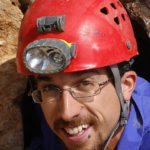
I am researcher at CE3C, Faculty of Sciences, University of Lisbon. While heading the Laboratory for Integrative Biodiversity Research (LIBRe), I am currently mostly interested in understanding global drivers of extinction and the distribution of species and communities across space and time. To reach such goals I am also developing new statistical and computational tools to quantify extinction risk and biodiversity at all levels: taxonomic, phylogenetic, and functional. Mail: pmcardoso (at) ciencias.ulisboa.pt (Research Gate – Google Scholar – Tuhat)
Postdocs
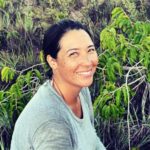
I have finished a postoctoral project in Instituto Butantan (Brazil) about the diversity of mygalomorph spiders in a Brazilian biome and received a Ph.D. degree in Zoology from the University of São Paulo (USP), Brazil, studying taxonomy and systematics of tarantulas. I have been working with evolution, taxonomy, ecology, natural history and behavior of arachnids since I was an undergrad student. My research interests since I became part of LIBRe are related to the trade of live tarantulas and scorpions through social media and its impact on wild populations as well as the inclusion of some tarantula species on the Red List of Threatened Species. I am supported by Kone Foundation (ResearchGate – Google Scholar)

I am a current PhD student at Georgetown University in Washington, DC, working in the Ries Lab of Butterfly Informatics on a project involving a global butterfly database, ButterflyNet. Will soon join LIBRe (part of the time while based on the US) for a postdoc project on morphological traits, ontology development, and macroecological questions involving butterflies as a primary study organism. (Research Gate – Google Scholar)
PhD students
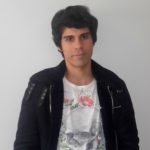
I am a PhD student, coming to Finland from 2020 to 2024 supported by Kone Foundation. I will work on the automation of extinction risk assessments according to the IUCN criteria. In the meanwhile I will have to learn deep neural networks and other cool stuff. (ResearchGate)

My name is Thomas, PhD student under the supervision of Sergei Tarasov and Pedro Cardoso. I am interested in understanding the different processes that contribute to shape the biodiversity. I am using methods at the interface of different fields such as ecology, physiology, genetics, computer sciences, statistics and mathematics to reach this goal. My current research aims at reconstructing the ancestral ranges and ecological niches of dung beetles in the Malagasy region.

I’m a PhD student funded by he Azorean government and based in the University of the Azores (Portugal). My focus is on the exciting and relatively new field of Recreation Ecology – study of the environmental consequences of outdoor recreation/nature-based tourism activities and their effective management. My thesis aims to explore the impact that pedestrian trails located in Azorean Laurel Forest cause on this ecosystem’s integrity. With this information, together with manipulative experiments where I will test some trail maintenance solutions, I will use Agent Based Modeling tools to predict the impact deriving from different degrees of touristic pressure and of different trail management options. (Research Gate)

I did my bachelor in Biology in Faculdade de Ciências da Universidade de Lisboa on the branch of environmental biology. Then I did my Master in Conservation Biology in the same institution and wrote my thesis about the pollinators visiting an endemic plant from the Madeira archipelago and their flower-visiting behaviour. At the beginning of 2021, I won a PhD scholarship. Since then I have been working on the topic: relation between land arthropods functional traits with their population trends using data collected on the Azores by different sampling methods and long-term monitoring schemes.
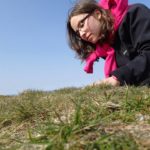
I am a biologist and an ecological economist working at Scotland’s Rural College (SRUC) as part of the Land Economy, Society and Environment research group. Recent research has focused on uptake of sustainable practices in agriculture and on the determinants of conservation behaviour (including values and attitudes) regarding biodiversity, water consumption and food waste. I have been awarded a joint SRUC and University of Edinburgh NERC DTP PhD scholarship (starting September 2017) to develop research on arthropod conservation in agricultural landscapes; particularly, on how farmer decision-making regarding the adoption of arthropod-friendly practices and its biodiversity outcomes can be modelled. (Research Gate)
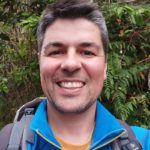
I am a biologist currently working at the Institute of Forests and Nature Conservation IP-RAM (Madeira Government, Portugal). Recent research and published work include new land snails species descriptions from Desertas islands (Madeira archipelago, Portugal), faunistic studies in the Madeira archipelago and species conservation assessments of the emblematic endemic landsnails species from Madeira archipelago. As a PhD student at the University of Madeira (Portugal), I am conducting an integrative study on spatial and temporal dynamics of the Madeiran land snails, with the purpose of evaluating the species response to climate and habitat shifting and its implications on their conservation. (Research Gate – Google Scholar)
Other students
Anna Karellou (GR)
I am a master student in the Ecology and Evolutionary Biology program of the University of Helsinki. I am mostly interested in conservation biology and behavioral biology. For my bachelor’s thesis I studied the wild population of parrots in Athens, Greece. Currently, I am part of the DEADMON project, and I will study as part of my thesis, the diversity of dead-wood insects in Finland, and evaluate their trapping and identification methods, while creating a barcode library. Introduction to new things fascinates me, and I am amazed with the wonders of nature. I also enjoy studying languages, travelling, and singing.

I am a MSc student working for project SustInAfrica, looking at automated ways to identify insect species from phone imaging to help farmers detect and identify potential pests before they become problematic. Within the project I am using Convolutional Neural Networks and other tools for automated image recognition. I’m a nerd kind of guy.

I am a master student in ecology and evolutionary biology program at the university of Helsinki. My interests are in biodiversity, systematics and evolutionary ecology. I joined the LIBRe through a master thesis project “Comparing functional diversity and ecosystem services provided by arthropods on different agricultural practices” which is part of the SustInAfrica project.
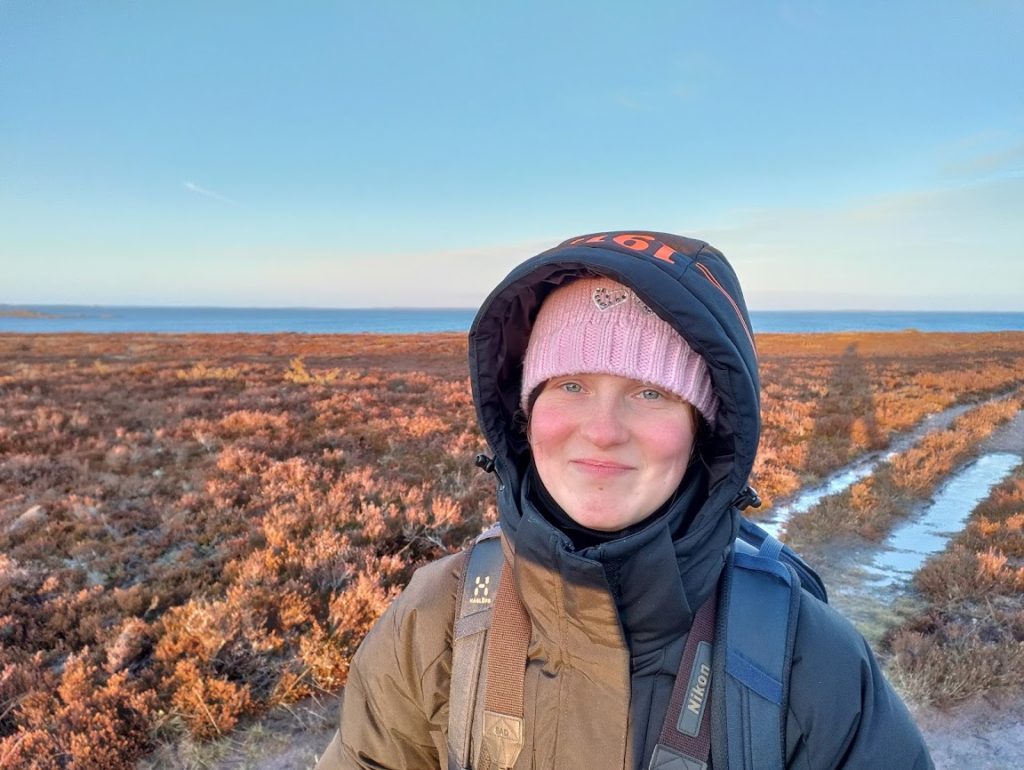
I’m a master student of environmental sciences at the University of Jyväskylä. During my study time, numerous topics have interested me. My bachelor thesis I made about tardigrades. My interest for polypores started when I attended a polypore course in Salamajärvi national park in the autumn of 2022. Then I ended up doing my master’s thesis about spatial optimization of polypore monitoring in the DEADMON project. In my free time I love to do bike trips and spend time in nature, for example watching birds.
Associate researchers
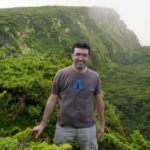
My main aim is to quantify biodiversity patterns and to understand what processes and mechanisms are involved, across multiple spatial scales. I am, particularly, interested in determining the major drivers of species distribution and community assembly in order to develop efficient conservation programs. I believe that this information is crucial to predict how environmental changes will affect biological diversity at different levels of organization. I’m also interested in developing and applying new statistical methods to address ecological questions. (Google Scholar)
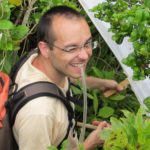
I was a PhD student at the University of Barcelona and LIBRe supported by FCT (Portugal). I am conducting an integrative taxonomy study on Madeiran endemic spiders, with special focus on the genera Dysdera and Hogna. For this I performed phylogenetic analyses of several genes, karyotype analysis, geometric morphometrics and other areas currently used to approach evolutionary insights on species-rich taxa in the Macaronesian archipelagos.

I was a postdoctoral researcher funded by a Marie Skłodowska Curie Fellowship at the Finnish Museum of Natural History (University of Helsinki) and at the Island Ecology and Evolution Research Group (IPNA-CSIC) from October 2016 to August 2019. My main research interest is the study of evolutionary biology, focusing in adaptive radiations by combining molecular and morphological approaches. I have been working mostly in phylogeny, phylogeography, morphology, prey preferences and nutritional experiments, besides molecular prey detection approaches with the spider genus Dysdera in the Canary Islands. My current research project aims reveal which are the main drivers of biodiversity in different biogeographical areas and ecosystems (islands vs. continents) by analysing the different components of biodiversity (taxonomic (TD), phylogenetic (PD) and functional diversity (FD)), using spiders as model organisms. Mail: nemaciash(at)gmail.com. (Research Gate – Google Scholar – Tuhat)
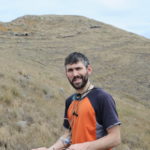
I was a postdoctoral researcher at cE3c – Centre for Ecology, Evolution and Environmental Changes, Azorean Biodiversity Group (University of the Azores) in partnership with the Finnish Museum of Natural History (University of Helsinki) during 2018/19. My general research goal is to advance our understanding of how biodiversity is created and to assist managing it in a time of biodiversity crisis. I am intrigued by the ecological and evolutionary mechanisms that determine community assembly, particularly the ones related to habitat adaptation and colonisation. (ResearchGate)
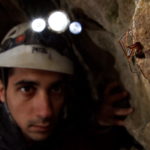
I was a postdoctoral researcher at LIBRe with a Marie Curie Fellowship during 2020/22. My research interest primarily focused on subterranean biology and the use of caves as eco-evolutionary model systems. I have been working mostly in community ecology, biogeography, macroecology, and conservation, making use of a range of field and statistical methods. Furthermore, I’m interested in the taxonomy and biology of spiders. Within LIBRe, my research project aimed at using caves, and specific spider communities within them, as a scalable model system to study macroecological patterns.
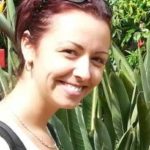
I was a PhD student at LIBRe during 2015/17. I have received a Ph.D. degree in ecology from Faculty of Sciences, University of Novi Sad, working on trait based prediction of extinction risk in Syrphidae, a Dipteran insect family. Currently I am employed at BioSense Research Institute in Serbia, but I have a close collaboration with Finnish Museum of Natural History. My research interests include functional ecology, distribution patterns of species and species distribution modelling, with the primary aim of species conservation. (Research Gate – Google Scholar)

I was a doctoral student at LIBRe funded by CONICET (Consejo nacional de investigaciones cientificas y tecnicas) in Argentina. My research project was about changes in spider diversity assemblage due to the replacement of native semideciduous Atlantic forest by exotic pine (Pinus taeda). Assessing the taxonomic, functional and phylogenetic diversity from the spider assemblages at different state of succession, I tested how habitat filtering is driving the assembly of spider communities in intensive productive systems. (Research Gate)
Alumni (former members)
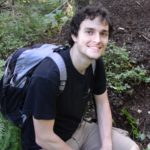
I was a PhD student at the Finnish Museum of Natural History, University of Helsinki, during 2016/22 supported by Kone Foundation. My main objective was to predict the extinction risk of species for which we lack abundance and geographical data, by looking at their biological and ecological traits. It involved playing around with simulations through agent-based modelling and with the exciting field of artificial intelligence too! (Research Gate – Google Scholar – Tuhat)

I’m a student of the degree course in Biological Sciences at UTA (Universidade Técnica do Atlântico). I’m in my last year and my final work is based on surveying the beetles of the protected areas complex in Cape Verde, namely Santa Luzia Island and Raso Islet.
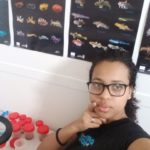
I am a student at the Atlantic Technic University of Cabo Verde, finishing my 4th year in Biological Sciences. My final work to get my grade is about the araneofauna of the Desert Islands (Santa Luzia and Raso) of Cabo Verde.
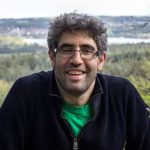
I have received a Ph.D. degree in quantitative ecology from the University of Newcastle (UK). During 2017-2018 I was working as a post-doc within the MACDIV project funded by the Fundação para a Ciência e a Tecnologia (FCT; Foundation for Science and Technology). My research interests span a number of different topics within the fields of macroecology and conservation biogeography. These include: i) explaining the distribution of species at large spatial scales from landscape to continental, and understanding the processes by which these distributions change over time ii) understanding the role of current and historical environmental conditions affect geographical patterns of biodiversity across large spatial scales. I also have a keen interest in the application of quantitative methods to ecology. As part of the MACDIV project, I investigated how spatial, historical and environmental factors influence different facets of spider diversity across Macaronesia. (Research Gate – Google Scholar)
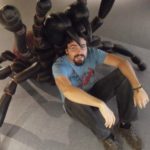
I was a London NERC DTP student doing my PhD at the University College London, in partnership with the Zoological Society of London and the University of Helsinki. My research aims were to overcome sampling biases in the IUCN Red List by empirically investigating how to derive the best possible sampling regime to allow Red List assessments to reflect extinction risk patterns in megadiverse taxa. Specifically assessing the applicability of the Sampled Red List Index to megadiverse taxa with limited data availability, such as arachnids. To achieve this I was using data from a number of completely assessed species groups, systematic bibliographic review (data mining), predictive modelling, simulations through agent-based modelling and with deep learning. (Research Gate – Google Scholar)
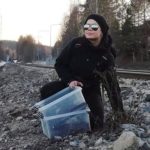
I am a master student of ecology and evolutionary biology at the University of Jyväskylä. In my bachelor thesis I focused on bird migration, which led my interest on species, species diversity and identification. My interest on invertebrates has grown during my studies and become my main interest. I find many invertebrate groups fascinating, but I’ve mainly focused on collecting and identifying Pseudoscorpiones, Opiliones, and some Heteroptera and larvae of Trichoptera. In my master thesis I’m studying Cecidomyiidae diversity in Finland, in collaboration with the University of Oulu and the Provincial Museum of Lapland. I participated in a spider identification and ecology course of University of Helsinki, and now I’m continuing standardized spider inventory research at the Finnish Museum of Natural History by sorting and identifying samples collected from Lammi and Kilpisjärvi biological stations.
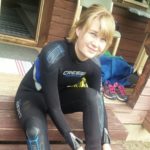
I am a second year undergrad student at the University of Helsinki. I joined the spider group at a field summer course and got the opportunity to take part on the ecological research taking place at Lammi and Kilpisjärvi. I’m currently doing a course at the museum called ‘learning by doing’. My mission is to learn how to identify spiders on my own and learn new things about the museum and the research that takes place here.
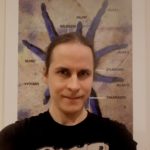
Master student of developmental genetics, background in molecular biosciences working with neurosciene, actin dynamics and vascular biology. Strong interest in neuro-evo-devo with increasing ecological aspects. Usually doing million things at a time, now finishing his master’s thesis and sidekick-studies in teaching and geography. Avid scuba diver (arctic waters only) and bicyclist. Fun fact: used to be a beer tap technician by random chance.
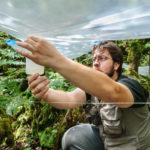
I was a PhD student at the University of the Azores and LIBRe, supported by the DRCT (Azores, Portugal). I was working with the arthropod communities in the canopies of the native Azorean forests. My main goals were to study the taxonomic and functional diversity of these communities, as well as their structure. Since I was using for the first time in the archipelago a sampling protocol with pyrethroid fogging, I was also able to study the re-colonisation processes that drive these same communities after defaunation. (Research Gate)

I finished my Master’s degree in Ecology and Environment in University of Porto, and was at LIBRe and the Finnish Museum of Natural History under the Erasmus+ internship program. The main objective of my work was to compare the community assembly of forest spiders on islands and continents. For that, I took some morphometrics measures on spiders to make a comparative functional diversity analysis across different settings (islands vs. continents) and trying to disentangle environmental filtering versus competitive exclusion as two opposing forces driving community structure, using null models. (Research Gate)

I was a Master student from the University of Helsinki working on plants’ threat assessments. I am especially interested in conservation issues and how climate change affects the northern ecosystems. Also, birds have always hold a special place in my heart. (Research Gate)

I am a BSc student at the University of Helsinki and working as a trainee at the Finnish Museum of Natural History. I am currently helping sort and identify the spider samples collected from Lammi and Kilpisjärvi biological stations. My interests lie mainly in the fields of genetics and bioinformatics, but I am also very interested in experiencing biology from multiple different angles.

I was a MSc student at the Finnish Museum of Natural History, University of Helsinki. I am fascinated by all kinds of arthropods, especially by spiders. In my thesis I focused on the assessments of spiders and evaluating the extinction risk of this megadiverse taxon as part of a research project led by the IUCN Spider & Scorpion Specialist Group working on the Sampled Red List Index for spiders.

I was doing a work try-out at the Finnish Museum of Natural History collaborating with several members of the LIBRe group retrieving biological and ecological traits for spiders and other taxa. I’ve previously worked on scorpion behavior, insect diversity and CT scanning, and almost everything can tickle my curiosity, from arthropods to quasars.
